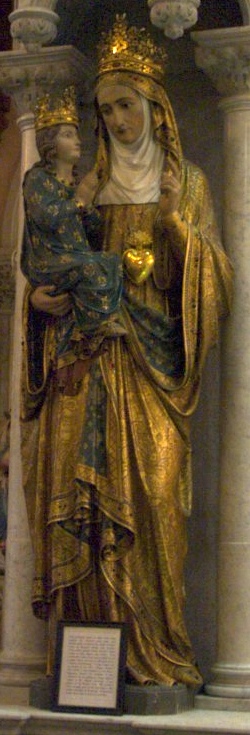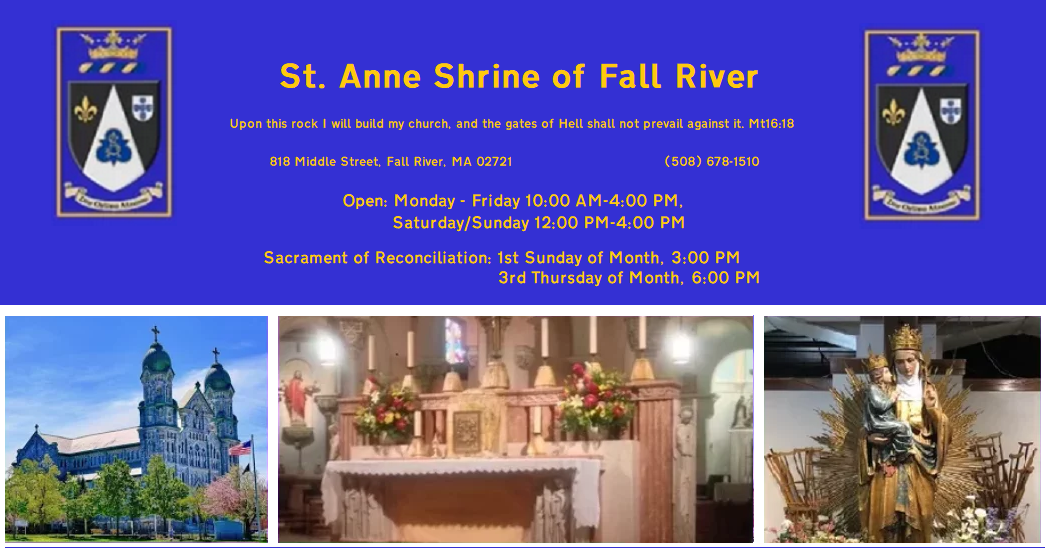Before we can appreciate the great contribution of the Dominican Fathers to St Anne Parish and greater Fall River, there are two important elements we must glance at: the presence of a large French-speaking immigrant people in the Fall River area, and the presence of French Dominican Fathers in America and their availability to come to Fall River.

Parish records show that shortly after the American Civil War a trickle of French Canadians quickly grew into a great flow of hopeful people seeking work and fortune in a land of great promise.
Saint Mary’s Parish was the only Catholic church in Fall River. The growing French community was cared for by an assistant pastor who would hold special services in French for them in the parish chapel.
Among the priests who came to help Father Edward Murphy, pastor of Saint Mary’s were Fathers Antoine Derbuel, French, former Canadian Oblate (29 August to 28 October 1868); Olivier Verdier, French, from Quebec (4 April to 10 July 1869); and Michel François LeBreton (4 October to 8 November 1869).
In a letter of Father A.L. Monthon, O.P., to his superiors in France, a description of Fall River is given: “There is in the state of Massachusetts, halfway between New York and Lewiston, an important enough city which is daily growing: Fall River. It is a seaport, a great factory city, and of all the United States it is the city where Canadians more and more flock.”
The people did not seem to be satisfied with assistant pastors who could speak their language. They demanded not only French-speaking pastors, but Canadians.
This demand, in face of a concerted attempt to stress the melting-pot idea of America and to have immigrants soon forget their native land, their language and their traditions, provoked not only hardship on the immigrants, but resentment and even open rebellion.
The Most Rev’d Louis-Joseph de Goesbriand, first Bishop of Burlington, himself a Breton, stressed in 1869: “The Canadians need missionaries from their own land; they need separate churches … To succeed with the Canadians, we must give them Canadian priests.”
The opinion was not shared among the hierarchy and, of course, there was not a super-abundance of such priests just waiting to serve American dioceses. Bishops were also worried that in a land where Catholicism was not warmly accepted with open arms, the Church had to be part of the country and not seem a disturbing foreign element.
Post-Vatican [II] and Bicentennial enthusiasm for one’s roots was not the custom of the day. As rich as the immigrants’ traditions are, so too, in those days, were the problems.
Sometimes, a French-speaking priest would be called on to gather the people together and found a parish. Then, when all was in order, the priest would be replaced by an English-speaking pastor. This rapidly caused all kinds of problems.
Rivalry between the French-speaking and the English-speaking Catholics was not always to the benefit of the community or the Church. Some antagonism brew into open rebellion.
At the time of the proposed formation of Saint Anne Parish, conditions were very unstable. Shortly, a disturbance in Notre Dame Parish (the first parish born from Saint Anne’s) would take on a violent characteristic that would take Vatican intervention to solve.
The new Bishop of Providence, Matthew Harkins, a close friend of Bishop Augustine Healy of Portland, sought to bring peace to all such disturbance. Bishop Healy had done well with the refugee French Dominicans of Lewiston. The Providence bishop, wanting not only to have a quiet diocese but a very apostolically involved one, turned to them also.
